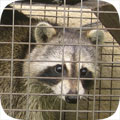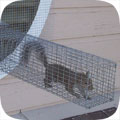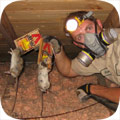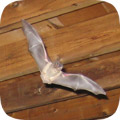- baltimore@wildlifeanimalcontrol.com
Call 24/7 for a free quote:
443-552-7907
Baltimore Wildlife Animal Control
Professional Wildlife Removal Company Servicing Baltimore, MD
If you have a problem with wildlife in your Baltimore home, your best option is to hire a company that specializes in Maryland wildlife removal only. This is a specialty business, and regular pest control companies do not use the proper techniques to solve animal problems. I have spent many years reviewing Maryland and Baltimore, and I recommend the following:
Wildlife Removal Baltimore
Cell Phone: 443-552-7907
NOTE: If you have a dog or cat problem, call Baltimore City County Animal Services: (410) 396-4694

Wildlife Removal Baltimore specializes primarily in removing animals from attics of homes and buildings - this includes squirrels in attics, raccoons, and rats or mice in homes. Maryland also has a documented problem with
bats in buildings, and Wildlife Removal Baltimore is specially trained in bat removal. They also perform general wildlife trapping services, such as the capture and removal of skunks or opossums on the
property. Call 443-552-7907 to discuss your critter problem and schedule a same-day or next-day appointment. Click here to learn more about what prices we charge in 2020.
When hiring a company to solve your wild animal problem, you want these features:
- Specializes in wildlife removal, not pest control
- Fully Maryland and Baltimore City County licensed and insured
- Works 7 days per week (critters don't take weekends off)
- Performs full building inspections: enters and inspects attic
- Performs exclusion repairs, with guarantee against animal re-entry
- Offers cleanup of biohazardous wildlife waste
Wildlife Removal Baltimore is a full-service Baltimore wildlife removal company. This is very different from a regular Baltimore pest control company. The pest control companies spray poison to kill insects. This is not at all
similar to wildlife removal. Wildlife Removal Baltimore performs a full inspection of the home or property, and determines why the animal(s) are there, and if inside a building, how the animals got inside. All
animals (including rodents) are trapped and removed, or if possible, removed from the building using special exclusion devices. Once the animals are gone, preventative repairs are essential, and
cleanup is sometimes recommended.
 Baltimore wildlife trapping - it's not as simple as it may seem. It's illegal in Maryland to trap without a license. Trap type is very important and there are many different types, bait is somewhat relevant, trap placement
is vital, and there are dozens of small things that are very important to know.
Safety is a concern. Then once the animal is trapped, it must be removed and dealt with in the proper manner according to Maryland law. We offer Baltimore raccoon removal. Read more about how to get rid of raccoons.
Baltimore wildlife trapping - it's not as simple as it may seem. It's illegal in Maryland to trap without a license. Trap type is very important and there are many different types, bait is somewhat relevant, trap placement
is vital, and there are dozens of small things that are very important to know.
Safety is a concern. Then once the animal is trapped, it must be removed and dealt with in the proper manner according to Maryland law. We offer Baltimore raccoon removal. Read more about how to get rid of raccoons.
 Animals in attics - this is our specialty at Wildlife Removal Baltimore. Many types of animals like to live in attics. This includes squirrels, raccoons, rats, mice, bats, birds, and even possums. Critters like to go into attics for a safe place to live
and raise their young. Removing animals from attics is very complex work, partly because of the presence of baby animals. If you need Baltimore squirrel removal, we can remove all the squirrels from your attic, and seal out any future ones. Read more about how to get rid of squirrels.
Animals in attics - this is our specialty at Wildlife Removal Baltimore. Many types of animals like to live in attics. This includes squirrels, raccoons, rats, mice, bats, birds, and even possums. Critters like to go into attics for a safe place to live
and raise their young. Removing animals from attics is very complex work, partly because of the presence of baby animals. If you need Baltimore squirrel removal, we can remove all the squirrels from your attic, and seal out any future ones. Read more about how to get rid of squirrels.
 Rodent control must be done in a very specific way. First off, the most important thing is that all the openings that rats and mice can use to enter a house be sealed. Then all the rodents must be physically trapped and removed.
Never, ever use poison! Most Baltimore exterminators will just use this lazy poison technique to kill rodents, and it causes more harm than good - dead stinky rats, and it doesn't solve the problem. Call us for correct Baltimore rat removal. Read more about how to get rid of rats.
Rodent control must be done in a very specific way. First off, the most important thing is that all the openings that rats and mice can use to enter a house be sealed. Then all the rodents must be physically trapped and removed.
Never, ever use poison! Most Baltimore exterminators will just use this lazy poison technique to kill rodents, and it causes more harm than good - dead stinky rats, and it doesn't solve the problem. Call us for correct Baltimore rat removal. Read more about how to get rid of rats.
 Bat removal is a highly specialized task. Maryland is known to have colonizing bats who often live in buildings. Bats love attics. If not removed, the colony can grow to a very large size over the years. The bat droppings are often corrosive and
cause health risks. The same goes for bird droppings on or in buildings. We perform Baltimore pigeon removal and bird control. But our specialty is Baltimore bat removal. We remove 100% of the bat colony and seal the building so that it's totally bat-proof. Read more about how to get rid of bats.
Bat removal is a highly specialized task. Maryland is known to have colonizing bats who often live in buildings. Bats love attics. If not removed, the colony can grow to a very large size over the years. The bat droppings are often corrosive and
cause health risks. The same goes for bird droppings on or in buildings. We perform Baltimore pigeon removal and bird control. But our specialty is Baltimore bat removal. We remove 100% of the bat colony and seal the building so that it's totally bat-proof. Read more about how to get rid of bats.
 If you have animals inside a house, no job is complete without proper exclusion repairs. If you simply hire a Baltimore trapper who only removes the critters, then the problem will return. You need to hire a Baltimore wildlife control company that identifies 100% of the animal entry points
into your building, and seals them shut with professional repairs. In addition, in many cases animals have left waste or contamination behind, and you'll want a company that can provide professional cleaning services. Wildlife Removal Baltimore does both.
If you have animals inside a house, no job is complete without proper exclusion repairs. If you simply hire a Baltimore trapper who only removes the critters, then the problem will return. You need to hire a Baltimore wildlife control company that identifies 100% of the animal entry points
into your building, and seals them shut with professional repairs. In addition, in many cases animals have left waste or contamination behind, and you'll want a company that can provide professional cleaning services. Wildlife Removal Baltimore does both.
The above are just some of the services offered by Wildlife Removal Baltimore. We also trap and remove animals that destroy lawns, such as moles, or digging animals. Sometimes animals like opossums will live under buildings, steal pet food, raid garbage cans, etc.
Read about how to get rid of opossums. Skunks commonly live under sheds or decks, and set up a den. We can trap and remove them without them spraying. Read about how to get rid of skunks. Wildlife Removal Baltimore
also provides dead animal removal in Baltimore. If you need help with any other wildlife conflict, from a fox, beaver, groundhog, or any other critter, we can solve it. We also do Baltimore snake removal - most of the snakes in Maryland are not venomous, but
call us if you want safe removal, or read about how to get rid of snakes in Baltimore. And remember, we are a private business, not Baltimore City County Animal Control Services, so if you have a dog or cat problem, call the County at (410) 396-4694.
Baltimore City County animal services does not handle any wildlife issues.
Wildlife Removal Baltimore: 443-552-7907
Baltimore Pricing Info For Year 2020
 Every wildlife removal situation is different, from the species of animals involved, the location of the animal inside a house or outside, the extent of repairs or cleanup, etc. It's impossible to give one-size-fits-all prices. Examples MIGHT include:
Every wildlife removal situation is different, from the species of animals involved, the location of the animal inside a house or outside, the extent of repairs or cleanup, etc. It's impossible to give one-size-fits-all prices. Examples MIGHT include:
Small Job: For example, a one-stop job to remove an animal in the yard: $100 on up
Medium Job: For example, getting critters out of your house with minor repairs: $300 on up
Large Job: For example, a project involving many service trips and complex work: $500 on up
Give us a phone call now and tell us about your wildlife issue and we will be able to give you a price estimate over the phone. If you're cool with it, we can schedule a same-day or next-day appointment if you like. Our prices are fair, and a good value because we do the job right, the first time.
Baltimore Wildlife Tip #1:
What to do with caught raccoon - If you've caught a raccoon, the first thing you need to do is make sure there are no babies left behind. Most racoons inside of a home are nursing females. Take a good look at your prisoner. If the animal has protruding nipples, it's a good best there are babies somewhere in the building. If you can't find the litter right away, waiting until dusk will usually help you. This is when the babies will become active, making all sorts of chirps, growls, and distinctive cries. Once located, you might have to cut them out of a wall where the mother has stashed them. Now they can be relocated with the parent. Unfortunately, because of the high stress level of relocation, some mother racoons will abandon their young. Check back daily to see if the babies have been moved by the mother. If not, you might want to gather them up and take them to a wildlife rehabilitator. Regardless of whether the racoon you caught is male or female, it should be taken at least five miles away from your home, though further would be better.
Baltimore Wildlife Tip #2:
Whats the name of a green snake that bite - Unfortunately, there are many snakes out there; all of them bite, and many of them are green. The good news is that there are only a few venomous snakes in North America, and most of them are recognizable in one way or another. To figure out what green snake bite you, you will have to look at the region where you live and the types of snakes in that area. Garter snakes are very common in most parts of the country. They often appear green and will have a stripe down the sides and back. When picked up or harassed, these snakes are just as likely to bite as any others. Getting bit by a snake should be a good lesson to keep in mind for the future. All snakes will strike when they feel threatened. If this snake managed to bite you, you are lucky it was not a venomous animal. A rattlesnake, cottonmouth, coral snake, or copperhead snake bite would have sent you to the hospital. None of these snakes have a distinctive green appearance. The coral snake is very recognizable with red, black, and yellow banding. All the other venomous snakes will have triangular heads and oblong pupils, not that you want to be close enough to look into the snake's eyes.
Maryland Wildlife Information:
Maryland State bird: Baltimore oriole
State mammal: Thoroughbred, calico cat, Chesapeake Bay retriever
State reptile: Diamondback terrapin
State fish: Striped bass
State insect: Baltimore checkerspot butterfly
Maryland is one of the most diverse states in the country, and it is so unique in its variety of habitats, it has been dubbed "America in miniature". This nickname is due to the fact the state has sand dunes, sea grass, swamps with tall cypress trees, thick oak forests on rolling hills, and mountains covered in pine woods. Despite the multiple ecosystems that exist in Maryland, there are no natural lakes in the state. Glacial activity did not extend into Maryland, and no deep holes were present to hold massive volumes of water. There are numerous natural ponds, but mankind has been forced to make the now plentiful lakes in the state.
Maryland is one of only a few states that have a population of wild horses. No horses in the United States are native; every herd is descended from stock brought over by explorers or settlers when the continent was first discovered. The horses in Maryland are contained on coastal islands. The horses are protected by law, and are allowed to roam free because of their historical relevance.
Horses aren't the only large grazers that aren't native to Maryland. Sika deer were originally introduced to the state, and are now populous enough to warrant a hunting season. The largest native grazer is the American elk, followed by the white-tailed deer.
Maryland doesn't just have large grazers, it also has large predators. Black bear are the most common large predators in the state, followed by coyotes in frequency of sightings. Wolves and mountain lions are much more reclusive but also share territory in the state.
Maryland wouldn't be complete without a list of common animals. Anywhere in the region you can find skunks, raccoons, porcupines, foxes, opossums, voles, moles, woodchucks, fishers, nutria, ermine, and mink. There are also bats, snakes, and a host of amphibians.
Being a coastal state, Maryland has an abundance of marine life, many of which are showcased in the Baltimore Aquarium. The list of marine wildlife includes sperm whales, beaked whales, dolphins, porpoises, humpback whales, and manatees. Of course, with a beach environment comes a large population of seagulls. Seagulls are one of the most problematic nuisance birds for business and homeowners along the coast. Their droppings are highly corrosive and can pose health risks for people.
You can always call Wildlife Removal Baltimore, any time of day, at 443-552-7907, for a price quote for Baltimore wildlife control services. I am confident that this is the best choice amongst wildlife removal companies in Baltimore, MD.





































